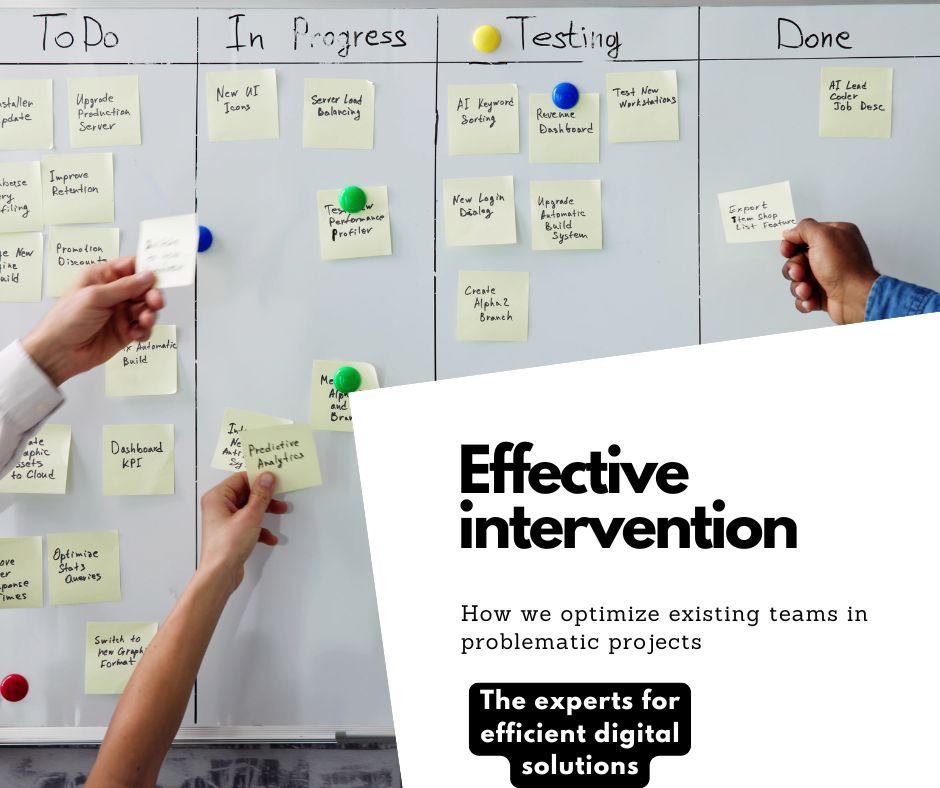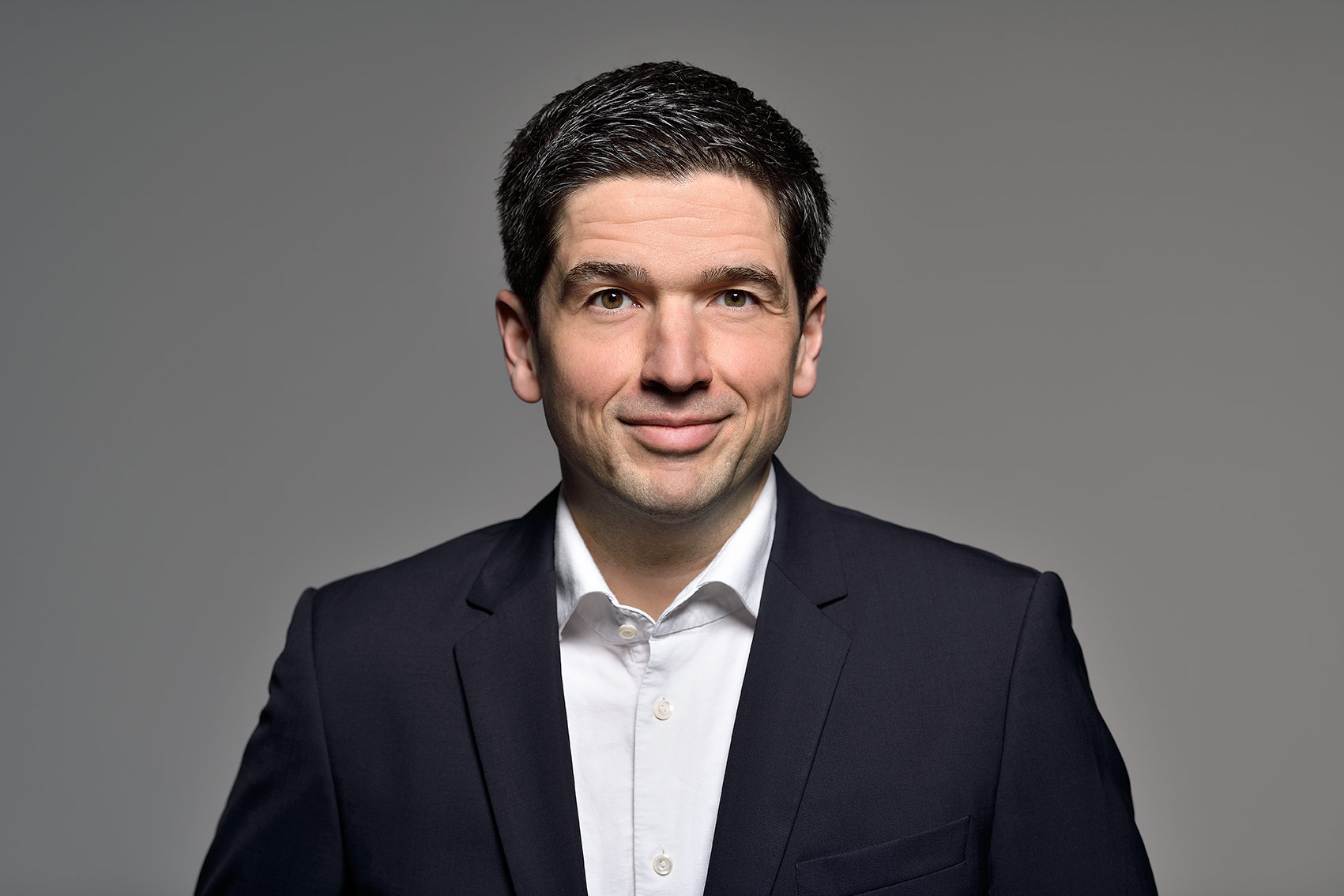Effective intervention: How we optimize existing teams in problematic projects

As an external service provider, we offer customized support for existing teams and help to successfully transform digital solutions. At a time when technological requirements are constantly growing and markets are changing rapidly, it is crucial to remain flexible and adaptable. Our expertise enables us to identify the challenges companies face and plan targeted interventions that meet specific needs.
In this article, we show how we use comprehensive analyses to gain well-founded insights that enable us to identify weak points in the course of the project and take targeted measures. We also explain how customized training courses help to expand the knowledge and skills of team members in order to increase efficiency and productivity.
Analysis of the project situation
The first step towards optimization is to conduct a thorough analysis of the current situation. This analysis helps us to identify the causes of the problems in the project and to understand the needs of the team.
Procedure
Example:
In a project for a web application, it turned out that unclear communication between departments was causing delays. After the analysis, we were able to propose targeted measures to improve the communication structures.


Targeted training
A lack of knowledge or skills on the part of team members is often a major factor in project problems. Through targeted training, we can ensure that the team has the necessary skills to overcome the challenges.
Procedure
Example
In a software development project, we organized a series of training courses to introduce new technologies. “The training courses not only gave us the necessary skills, but also boosted our self-confidence,” says Peter, a developer in the team.
Staff Augmentation
If a project is under time pressure or additional expertise is required, staff augmentation is an effective solution. We offer qualified specialists who can be integrated into existing teams at short notice to overcome bottlenecks.
Procedure
Example
In a project that was stagnating due to staff shortages, we provided additional developers at short notice. “The support not only helped us to keep to the schedule, but also improved the quality of the work,” reports Julia, the project manager.


Communication optimization
Clear and effective communication is crucial to the success of a project. Misunderstandings and information gaps can often lead to delays and frustration. We help teams to optimize their communication structures.
Procedure
Example
In an ongoing project, it turned out that the team often communicated via different channels, which led to confusion. After implementing regular meetings and using a central communication platform, the team reported: “We have significantly improved the transparency and efficiency of our collaboration.”
Case study 1: E-commerce platform with unclear requirements
Background
An e-commerce startup had difficulties launching its platform in time for the start of the season. The initial requirements were unclear, which led to delays and misunderstandings between the development teams.
Solution
We carried out a thorough analysis and organized workshops with the stakeholders to clearly define the requirements. The team received support in creating detailed requirements documentation.
Result
Once the requirements had been clarified, the developers were able to work in a targeted manner. The introduction of weekly status meetings significantly improved communication, enabling the project to be successfully launched within two months. The platform achieved a 30% increase in sales in the first three months.


Case study 2: Software development project in the healthcare sector
Background
A healthcare company was working on a patient management software solution but did not have enough in-house developers to keep to the schedule. The project delays led to financial losses and poor feedback from users.
Solution
We offered staff augmentation and provided three experienced developers who integrated seamlessly into the existing team. We also provided training to ensure that all team members were familiar with the specific requirements of the project.
Result
By expanding the team, the project was able to get back on track. The additional resources made it possible to meet the original schedule and the product was successfully launched with a 20% improvement in user satisfaction.
Case study 3: Implementation of a new AI-based software solution
Background
A medium-sized retail company wanted to implement an AI-based software solution to better analyze customer behavior and develop personalized marketing campaigns. However, the internal team did not have the necessary knowledge of AI technology, which led to uncertainties and delays in the project.
Solution
As an external service provider, we carried out a comprehensive needs analysis to understand the company’s specific requirements. We then developed a customized training program for the internal team that covered the basics of AI technology as well as specific training on the new software solution. We also provided two AI experts to support the team during the implementation phase.
Result
After completing the training, the internal team was able to actively participate in the implementation of the AI solution. The close collaboration with our expert ensured that all technical issues were quickly resolved. The new software solution was successfully implemented within the given timeframe and enabled the company to develop personalized marketing campaigns that increased the conversion rate by 25%. In addition, customer satisfaction increased significantly as customers were now targeted and relevant.


The successful optimization of existing teams in problematic projects requires a combination of targeted analysis, continuous training and flexible support. By bringing in external expertise and fostering communication, we create the conditions for sustainable success. Our goal is to support companies in efficiently implementing their digital solutions and pursuing innovative approaches.
Till Neitzke
Conclusion: How we optimize existing teams in problematic projects
Effective intervention to optimize existing teams working on digital solutions requires a systematic approach based on root cause analysis, targeted training, staff augmentation and communication optimization. By implementing these strategies, we can put projects back on the road to success and sustainably improve team performance. As an external service provider, we specialize in developing tailor-made solutions that meet the specific needs of teams. In this way, we create the conditions for sustainable success in digital development and help companies to successfully implement their projects.

Successful together in the digital transformation –
Your introductory meeting with DMG
In our introductory meeting we will discuss
- what your current challenges are in digital projects
- how other companies have done it and how you can use this to your advantage.
- what needs to be done now and whether we are the right people for the job.
